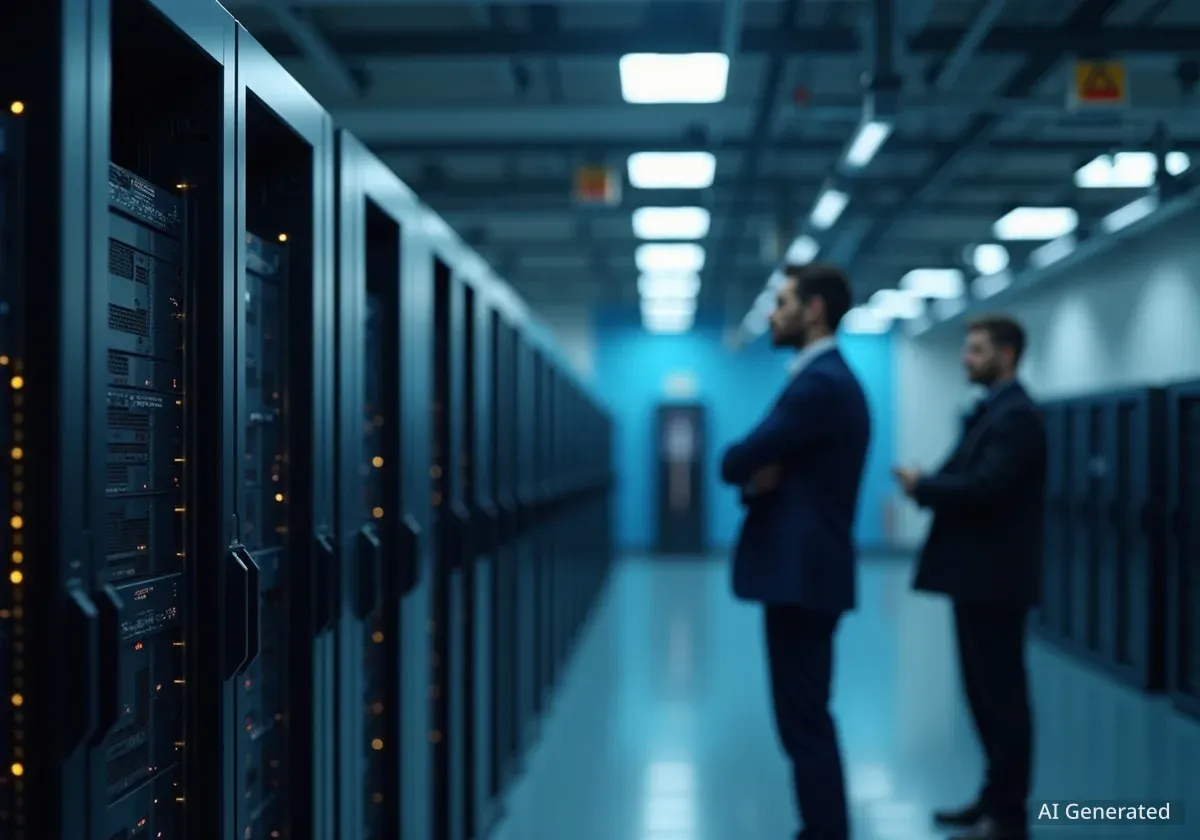Cisco Systems Inc. has introduced a new all-in-one product, Unified Edge, designed to bring artificial intelligence capabilities directly to businesses like retail stores, healthcare facilities, and factories. This integrated system aims to simplify the deployment and management of AI tasks at local sites, often referred to as the 'edge' of the network.
The Unified Edge combines essential components such as chips, storage, networking infrastructure, and security software into a single rack of equipment. This approach addresses the growing demand for local AI processing, particularly in environments that may lack dedicated IT staff.
Key Takeaways
- Cisco's Unified Edge integrates chips, storage, networking, and security for AI at local sites.
- It allows businesses to deploy AI inference without extensive on-site IT expertise.
- Customers can choose their preferred AI chips from vendors like Nvidia or Intel.
- The system is designed for remote monitoring and management by centralized IT teams.
- Verizon Communications Inc. is an early adopter, with wider availability expected by year-end.
Bringing AI Closer to Operations
Most current AI operations, particularly model training and complex inference, take place in large, centralized data centers. However, there is a significant shift towards processing AI tasks closer to where data is generated and actions are needed. This is known as edge AI.
The Unified Edge solution is a direct response to this evolving need. It provides a comprehensive infrastructure that can handle AI inference tasks locally, reducing latency and reliance on constant cloud connectivity. This is particularly beneficial for applications requiring real-time decision-making, such as automated quality control in factories or personalized customer experiences in retail.
Fact Check
- Unified Edge combines hardware and software in one rack.
- It supports third-party AI chips from leading manufacturers.
- The system simplifies AI deployment in environments without skilled IT personnel.
Overcoming Remote Management Challenges
One of the primary challenges in deploying IT infrastructure at remote branches or factory floors is the difficulty of management when issues arise. These locations often lack the specialized IT personnel available at corporate headquarters or data centers. Cisco's Unified Edge directly addresses this by designing the system for ease of installation and robust remote management.
"What ends up happening in these branches or stores or factory floors is it’s very hard to manage remotely when something goes wrong," said Jeetu Patel, Cisco President and Chief Product Officer. "So they have these systems that can cobble together, but then when something goes wrong, there’s no way to remotely monitor them. There’s no way to manage them in a proper way. There are wires are dangling all over the place."
The Unified Edge aims to eliminate this complexity. It is designed to be a plug-and-play system that can be monitored and managed by centralized corporate technicians. This reduces the need for on-site IT intervention, saving time and resources for businesses.
Integrated Components for Seamless Operation
The Unified Edge integrates several critical components to create a cohesive AI environment. It includes Cisco's own networking, security, and monitoring software, which form the backbone of the system's management and operational capabilities. This ensures a consistent and secure operating environment for AI applications.
Crucially, the system offers flexibility in its core processing power. Customers can integrate their choice of AI chips from major vendors. This allows businesses to select the best hardware for their specific AI workloads, whether they prioritize raw processing power, energy efficiency, or specific AI acceleration features.
Market Context
The demand for edge AI is growing as businesses seek to leverage AI for operational efficiency and enhanced customer experiences. Industries like manufacturing use AI for predictive maintenance and quality control, while retail uses it for inventory management and personalized marketing. Healthcare facilities can employ edge AI for real-time patient monitoring and diagnostics. This trend is driving innovation in hardware and software solutions tailored for distributed AI deployments.
Early Adoption and Future Availability
The Unified Edge is already being tested by major companies. Verizon Communications Inc. is one of the early customers utilizing the new product. This early adoption by a large telecommunications provider highlights the potential and readiness of the technology for real-world applications.
The equipment is currently available for order and is expected to be widely available by the end of the current year. This timeline suggests a rapid rollout, indicating Cisco's confidence in the product's market readiness and the urgent need for such solutions.
The Nascent State of Edge AI Deployment
Despite the excitement, the widespread deployment of AI inference at the edge is still in its early stages. Several challenges remain, including shortages of specialized infrastructure like AI-optimized chips and adequate power supplies. Security concerns are also paramount, as distributing AI capabilities across numerous locations increases potential attack surfaces.
Furthermore, there is a recognized need for more specialized products designed specifically for edge AI use cases. These products will likely feature lower power consumption and be optimized for the unique demands of local processing. As the market matures, we can expect to see further innovations in this area.
"We are so early in this kind of movement that you haven’t really seen massive levels of inferencing at the edge happening yet," Patel observed, underscoring the significant growth potential in this sector.
The introduction of products like Cisco's Unified Edge marks an important step in making edge AI more accessible and manageable for a wider range of businesses. It simplifies the complex task of deploying AI infrastructure, allowing companies to focus on leveraging AI's benefits rather than managing its underlying complexities.





